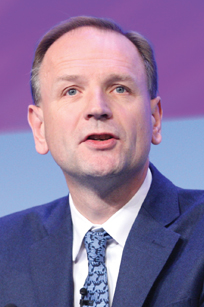Covid-19 update: 1 May
It was a big week for Boris Johnson as he resumed his prime ministerial duties following his coronavirus illness and announced the birth of a son with partner Carrie Symonds. On Thursday he took charge of his first Covid-19 press briefing for several weeks.
‘We are past the peak of this disease and on the downward slope,’ he told the country, with the infection rate – the R value – now believed to be between 0.6 and 0.9 across the country. In fact he said the country had ‘come under what could have been a vast peak’ avoiding a ‘reasonable worst case scenario’ of 500,000 deaths.
And he promised that next week the government would bring forward a road map with a menu of options aimed at getting the economy moving, get children back to school and enable people to get back to work – with implementation dates depending on the continued reduction in key metrics.
New cases (based on positive lab tests) have been stable over the last seven days even though test capacity has been increasing. The number of people in hospital with Covid-19 has decreased by 16% to 15,044 over the last week. And the percentage of all critical care beds being used for Covid-19 patients has fallen to around 33% in England from a high of 58% a few weeks ago. The picture is similar across the four UK nations with Scotland, Wales and Northern Ireland all having slightly more headroom on critical care beds.
All of this is encouraging. However, deaths continue to accumulate, although the seven-day rolling average is falling. Concern about the impact of the virus within care homes has also continued to grow.
The government has now started to report deaths in all settings alongside the figures for hospital deaths. By 29 April, deaths outside of hospital (3,811) accounted for nearly 15% of all deaths (26,097).
However these figures do not tell the whole story as they only include people who have tested positive for Covid-19. Not all of those dying in care homes will have had tests. In fact, the initial policy, while testing capacity was limited, was for only the first few residents in a care home to exhibit symptoms to be tested. After positive tests, subsequent cases were assumed to have the virus.
Office for National Statistics (ONS) figures, based on registered deaths where Covid-19 is mentioned on the death certificate, suggest that by 17 April there had already been 3,096 deaths in care homes relating to coronavirus and 4,169 if you also counted private homes and hospices.
And to provide a new angle on the issue, new data from the ONS, based on deaths notified to the Care Quality Commission, show that there were 4,343 deaths involving Covid-19 in care homes in the two weeks up to 24 April.
With significant increases in the levels of care home deaths generally, and most of them not being attributed to Covid-19, there is a growing belief that the total number of Covid-19 deaths continues to be significantly under-recorded. Increasingly, experts are suggesting that the full extent of the deaths relating to the virus – both direct and indirect in all settings – will only be revealed by an analysis of excess deaths, comparing countries on the basis of all-cause mortality adjusted for age.
Niall Dickson, chief executive of the NHS Confederation, said the sharp rise in care home deaths was tragic but not a surprise. ‘We need to stop thinking they are part of a different system, a different world,’ he said. ‘That means doing everything locally and nationally to support this critical part of our health and care sector with the right personal protective equipment, training and support in infection control as well as adequate funding.’ He added that the social care action plan for England announced earlier this month was welcome, but more needs to be done.
The other growing concern is that the whole Covid-19 crisis is stopping people accessing health services for non-Covid-related illnesses.
A letter from NHS chief executive Simon Stevens (pictured) and chief operating officer Amanda Pritchard said that emergency hospital admissions last week were at 63% of the level in the same week last year. There is likely to be a rebound in emergency demand, although the timing and extent of this rebound is uncertain.
‘We are now asking all NHS local systems and organisations working with regional colleagues fully to step up non-Covid-19 urgent services as soon as possible over the next six weeks,’ the letter said. ‘This needs to be a safe restart with full attention to infection prevention and control as the guiding principle.’
Going further than this, NHS bodies are also being asked to consider if they have further capacity to take on ‘at least some routine non-urgent elective care’.
Back at the Confederation, Mr Dickson said that neither the NHS nor the British public were out of danger yet. Resumption of wider services needed to be carefully managed and required a measured response to protect patients and staff and ensure the infection did not spread further as a result.
‘This will certainly not be a return to normal overnight,’ he said. ‘For example, simple basic theatre procedures will require additional PPE and infection control measures; as will home visits by mental health nurses and in care homes, infection control is radically changing the way care can be given. All this will stay.’
He added that clinicians and managers would need to lead the redesign of services, ‘freed of any bureaucracy that could get in the way’.
Mr Stevens’ and Ms Pritchard’s letter also calls on the NHS to ‘lock in’ beneficial changes that have been introduced during the last few weeks. ‘This includes backing local initiative and flexibility; enhanced local system working; strong clinical leadership; flexible and remote working where appropriate; and rapid scaling of new technology-enabled service delivery options such as digital consultations,’ it said.
NHS Providers chief executive Chris Hopson said that if the country was past the peak, as suggested by the prime minister, it was thanks to the credit of the NHS and frontline staff, but he insisted there was ‘a long way to go’.
He added that an updated testing strategy was needed as the government considered the route out of lockdown. This needed to set out how testing would be used effectively to help avoid a second peak in the virus. ‘There has been a series of tactical announcements extending the testing criteria to new groups, but nothing on the longer term strategy,’ he said. ‘What trust leaders need now is clarity on the testing regime from here on.’
Related content
We are excited to bring you a fun packed Eastern Branch Conference in 2025 over three days.
This event is for those that will benefit from an overview of costing in the NHS or those new to costing and will cover why we cost and the processes.